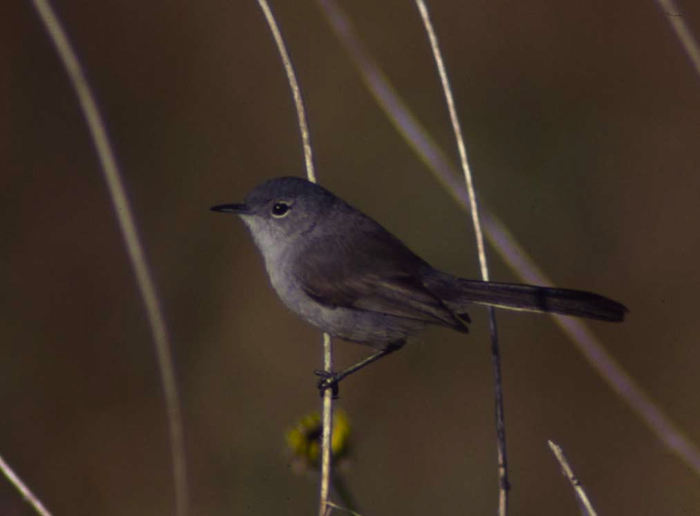
California Gnatcatcher Photo By Peter Knapp
Recent study challenging genetic distinction of bird isn’t sufficient to overturn massive amount of research supporting its protection
Published: Jun 25, 2014
San Francisco, CA –
The latest attempt by southern California developers to remove the California Gnatcatcher from the protections of the Endangered Species Act is based on inadequate data and should be rejected by the U.S. Fish & Wildlife Service, said representatives of Audubon California today. Years of peer-reviewed research and the predominant conclusion of biologists is that the California Gnatcatcher is a distinct subspecies that must be protected.
The delisting petition relies on recent research claiming that the California Gnatcatcher is not a genetically unique subspecies, but a number of avian experts note that the referenced study does not analyze enough genes to make that determination and that it downplays plumage variation among the three subspecies that can only be explained by genetic differences.
“The fact that the California Gnatcatcher is a distinct subspecies worthy of protection was established in 1993, and there’s nothing in this latest petition that casts doubt on that determination,” said Brigid McCormack, executive director of Audubon California. “The California Gnatcatcher is emblematic of the rich ecology of southern California, an enduring remnant of our wild coast that has been lost to such a great extent.”
The California Gnatcatcher is a small blue-gray songbird with dark blue-gray feathers on its back and grayish-white feathers on its underside. Its long tail is mostly black with white outer tail feathers. Since the 1980s, at least, experts have considered the California Gnatcatcher rare. A survey conducted at the time of its listing in 1993 estimated the number of California Gnatcatcher pairs in the Golden State at about 2,500 (although there is reason to believe that numbers could have been higher). The coastal sage scrub habitat upon which the bird depends has been in rapid decline for decades, due both to development and habitat conversion caused by repeated, intense fires. Some researchers estimate that as little as 10 percent of California’s original coastal sage scrub habitat remains today.
The California Gnatcatcher was designated as Threatened under the Endangered Species Act in 1993, after an extensive review by federal agencies determined that the rapid loss of coastal sage scrub habitat made the bird worthy of protected status. Coastal sage scrub habitat is particularly in high demand for development, as it tends to occur in low-lying areas close to the ocean. It remains one of the most endangered habitat types in North America.
This is the second time in five years that the Pacific Legal Foundation has petitioned to delist the California Gnatcatcher, and the second time it has relied on research from the same source. In 2011, the U.S. Fish & Wildlife Service rejected a similar petition challenging the genetic distinction of the California Gnatcatcher, citing overwhelming scientific evidence to the contrary. McCormack added that Audubon California is looking forward to hearing more from experts at the U.S. Fish & Wildlife Service and other scientists as they carefully review the delisting petition.
Listing of this species has lead to protection of coastal sage scrub habitat and many associated species in southern California, providing residents and visitors with many opportunities for parklands for wildlife viewing and recreational opportunities.
“The California Gnatcatcher represents an entire suite of species that rely upon coastal sage scrub for survival, and deserve to be protected for future Californians,” added McCormack. “With the rapid decline of these ecosystems, the gnatcatcher will be in even greater peril in the future, and now is the wrong time for this petition.”
About Audubon California
Audubon California is building a better future for California by bringing people together to appreciate, enjoy and protect our spectacular outdoor treasures. With more than 50,000 members in California and an affiliated 48 local Audubon chapters, Audubon California is a field program of the National Audubon Society.
More information is available at www.ca.audubon.org.
###
Now in its second century, Audubon connects people with birds, nature and the environment that supports us all. Our national network of community-based nature centers, chapters, scientific, education, and advocacy programs engages millions of people from all walks of life in conservation action to protect and restore the natural world. Visit Audubon online at www.audubon.org.

Comments are closed.